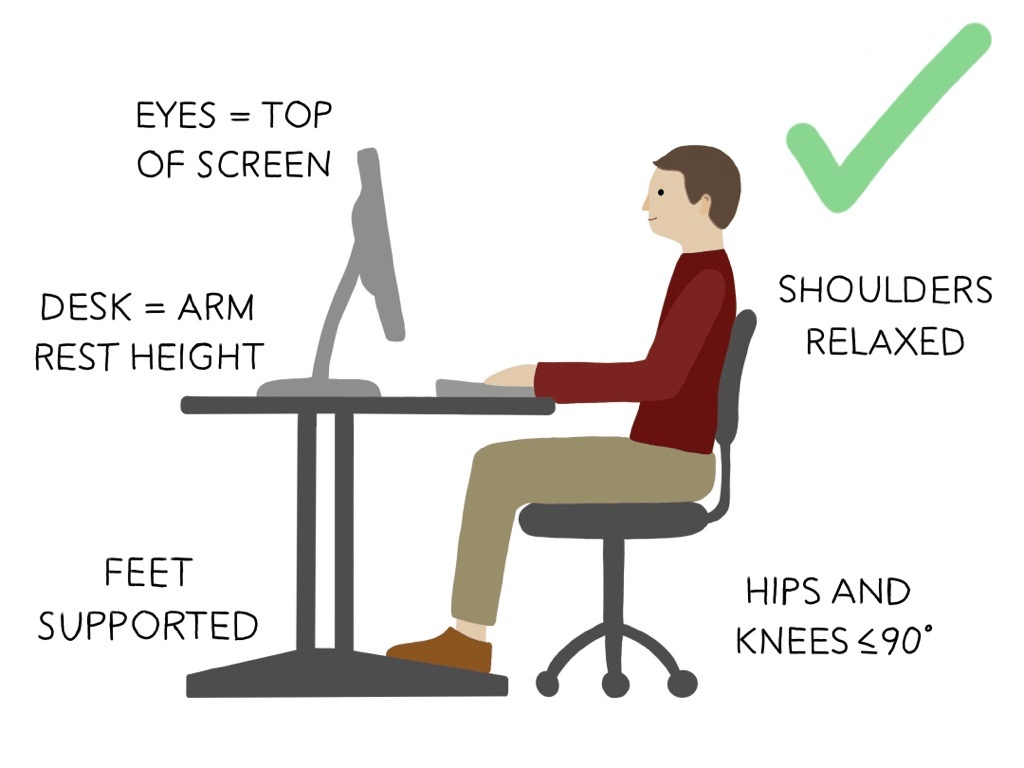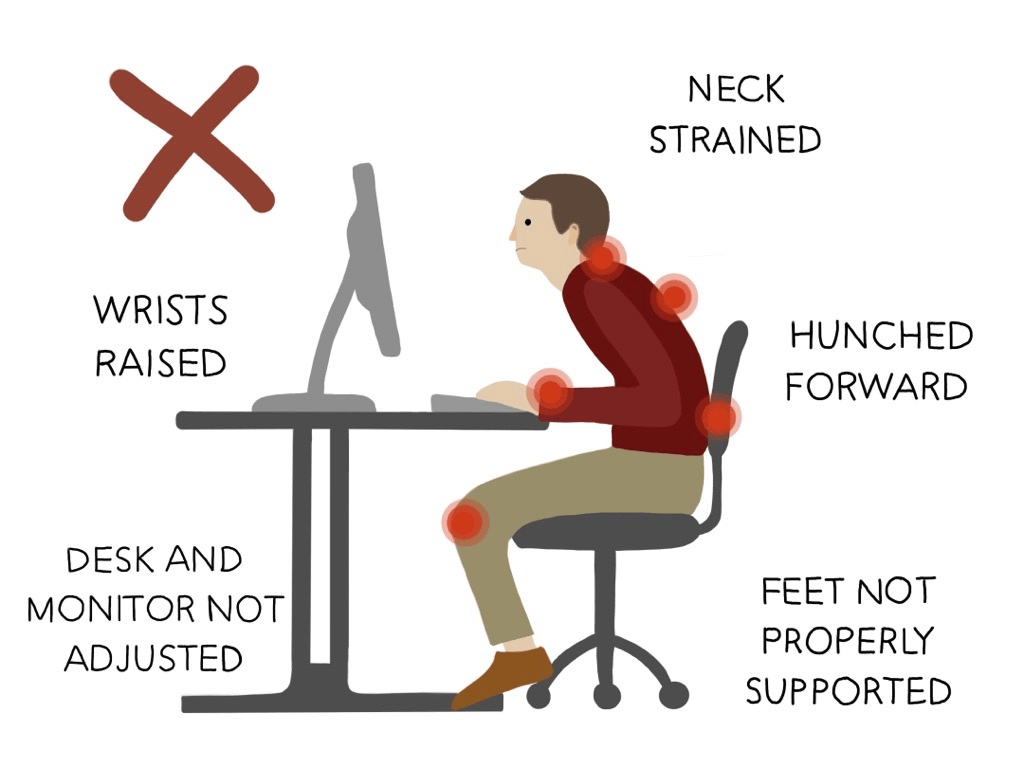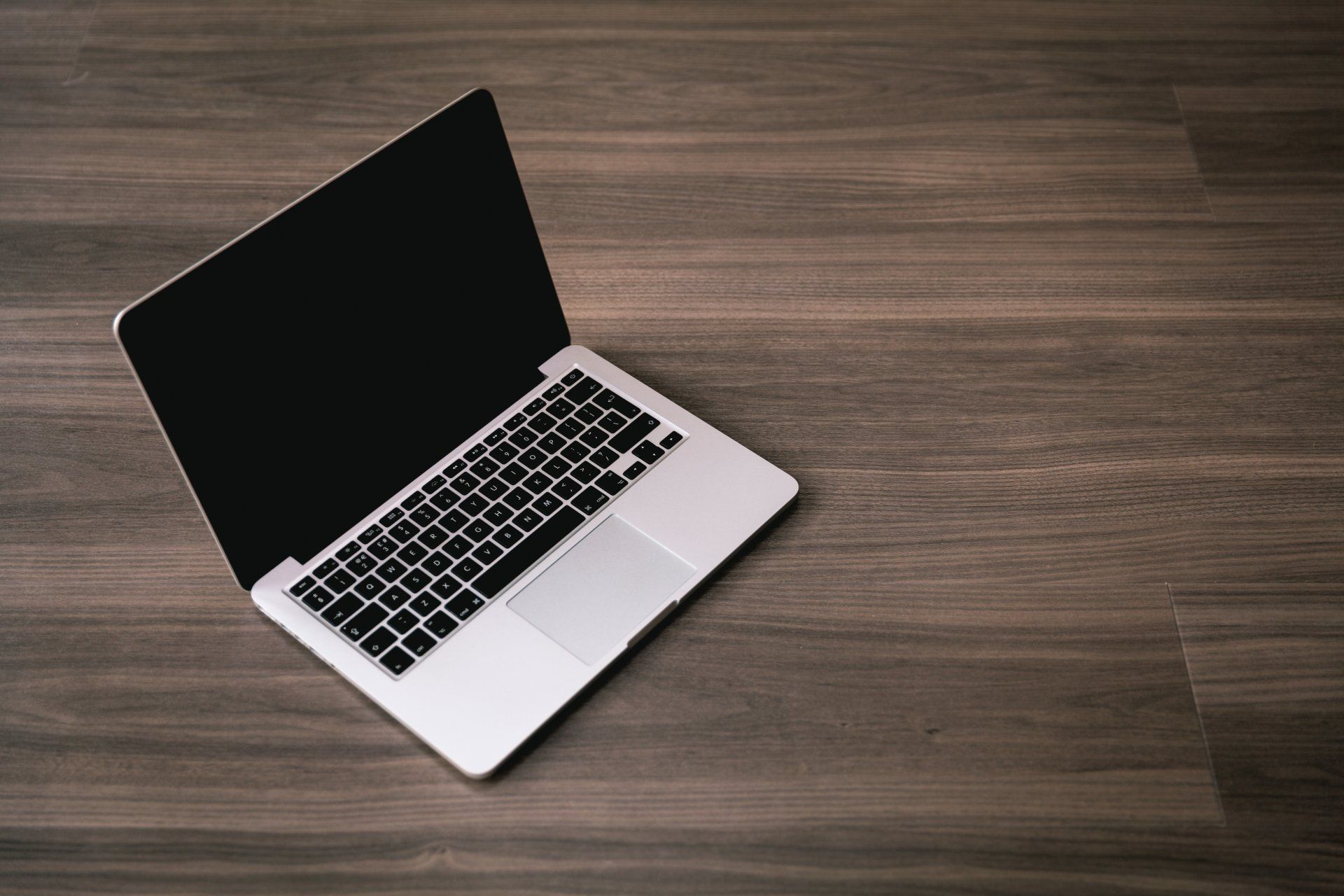A Guide to Working from Home
A Guide to Working from Home
In this issue:
· Top tips on how to stay healthy physically and mentally and limit the impact of loneliness whilst working from home
· Basic home working ergonomics
'Return to working from home’. Many businesses have begun to embrace the idea of flexible working and working from home and, in the current climate, more and more of us may find ourselves plunged into doing so for longer than the one to two days a week, which employers and employees adapt to fairly easily. This has required a huge amount of adaptation from both managers and employers. This short guide provides some practical tips on how to limit the impact of loneliness on health and wellbeing during this time:
1. Avoid negative thoughts. Constantly thinking about the negatives associated with isolation can worsen emotional distress. Accepting the situation is the first step in controlling our emotions and minimising the chances of feeling lonely.
2. Use technology to create emotional connections. Social relationships are essential for both our physical and mental health. Maintain regular contact with your social circle via video calls, instant messaging or phone conversations. We should use these means in a healthy way – avoid placing COVID-19 at the centre of all conversations and try to talk about other things that will help distract us.
3. Maintain a certain level of physical activity. Physical exercise, even a brisk walk, helps release endorphins in the brain, so if a certain level of activity is maintained during this period, the production levels of these hormones will remain high.
4. Watch your diet – it’s essential to improve our mood. Since approximately 95% of serotonin – the hormone that works as a neurotransmitter and regulates sleep, appetite, and mood – is produced in the gastrointestinal tract, a balanced diet will be essential to cope with loneliness, as indicated by Harvard University. In this way, eating more foods such as white meat, eggs, pulses, whole grains, nuts, seeds, bananas or dark chocolate, always within the limits of a balanced diet, will contribute to improving our mood.
5. Communicate regularly with colleagues. Adjusting to working from home can impact people’s emotional well-being as the work environment is often a place for social interaction. For this reason, it’s important to continue maintaining regular communication with colleagues.
6. Get some sun, if possible. Sunlight strengthens our immune system and improves our mood, as it stimulates the synthesis of vitamin D, a key substance for the central nervous system that helps control depressive symptoms.
7. Establish a routine with regular sleep schedules. It’s important to set schedules and maintain routines, especially regarding hours of sleep, eating and exercise. The longer we are busy, the lesser room for loneliness.
 Write your caption here
Write your caption here
Slide title
Write your caption hereButton
Home working ergonomics: Basic Tips
Positioning your workspace
To avoid “microtraumas” - the tiny strains we put on our joints and muscles that may be invisible now, but will come back long term - it’s important to make sure your workspace is positioned as follows:
Positioning your technology devices
In an office, you’re likely to have a good quality desk and chair that make it easy to position your devices at a healthy distance from your eyes. It’s just as important to ensure you do the same at home. A few things to pay attention to include:
· Lighting and glare
· Distance from screen
· Blue light software
· Blue light lenses
· Screen brightness
· Text size and contrast
Combating dry eye symptoms
Dry eyes can cause your eyes to feel heavy and disrupt the quality of your vision which can lead to symptoms of eye fatigue. As well as ensuring a healthy work space for your vision, there are methods to help reduce dry eye whilst working from home:
· Blink regularly
· Take breaks
· Eye drops
· Drinking lots of water and keeping hydrated
Remember that wherever you may be working from, you should feel happy and safe at work. If you feel you need more support, please get in touch with your line manager or give us a call.
Need some additional help or advice?
Click here to visit the new COVID-19 area of our website for regularly updated resources and support
Fancy a chat?
Pull up a comfy chair, grab a cuppa and a custard cream, and let's talk safety. Go on, you know you want to...
Contact Us
We will get back to you as soon as possible
Please try again later













